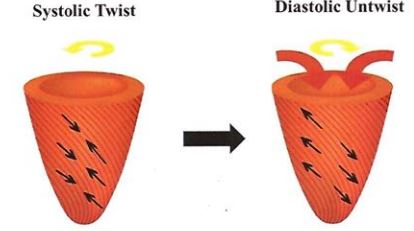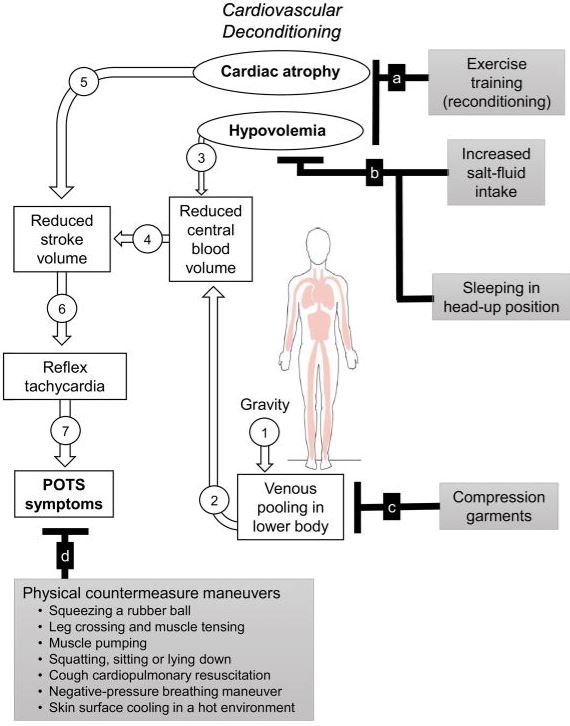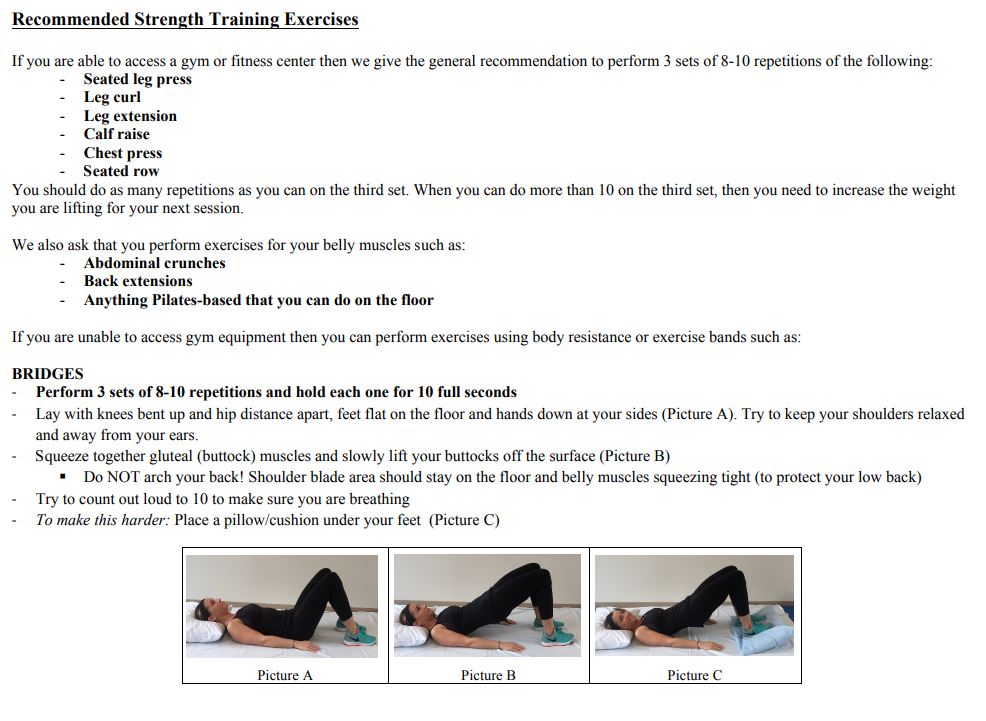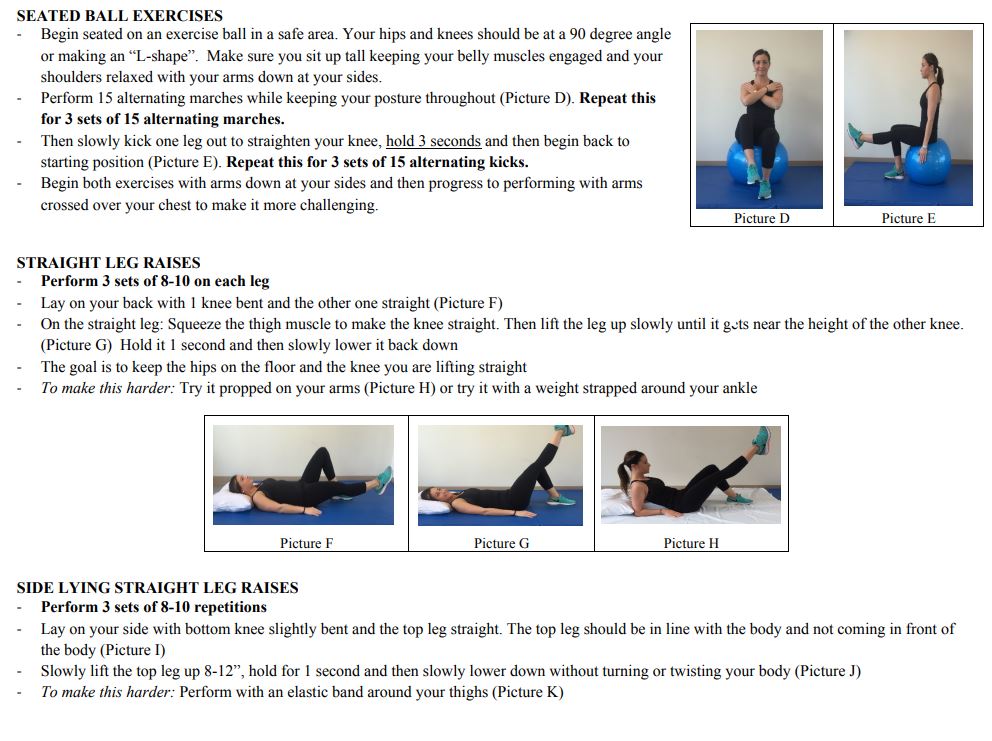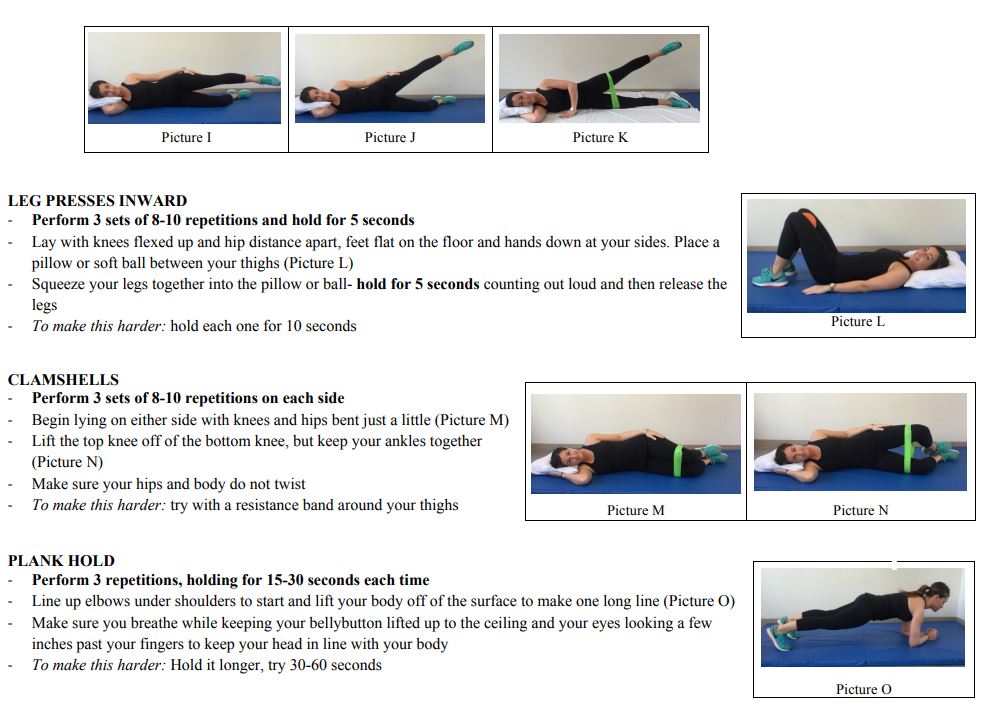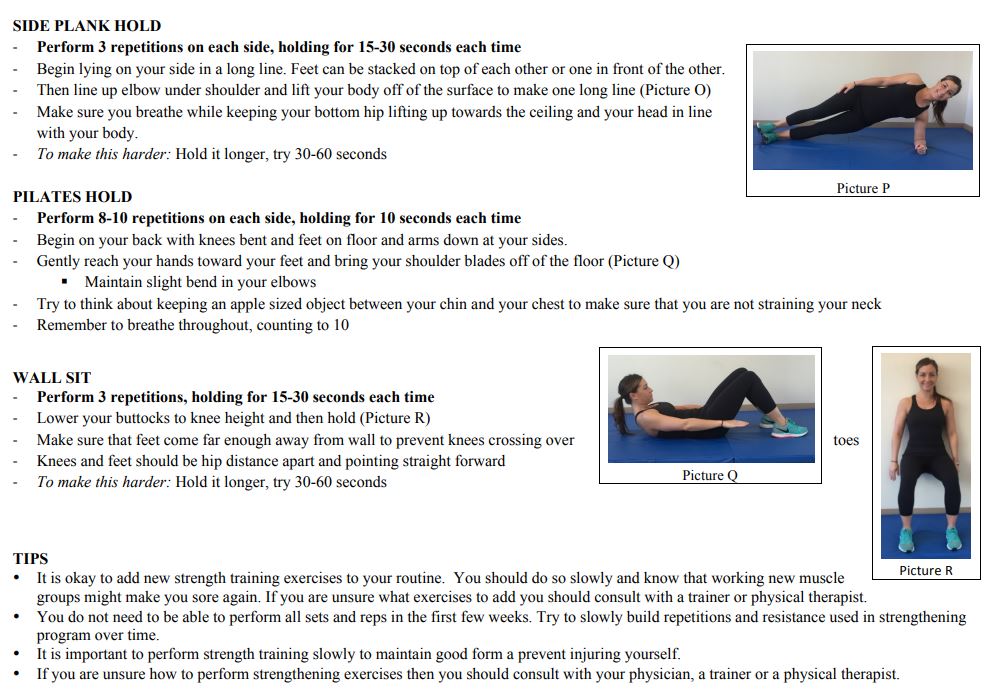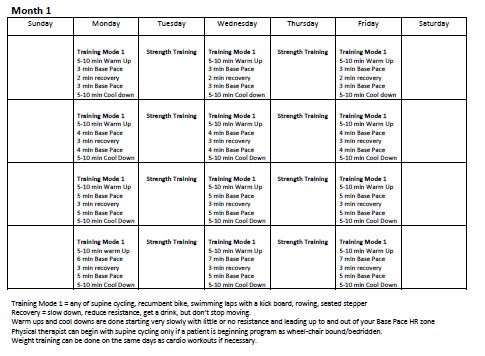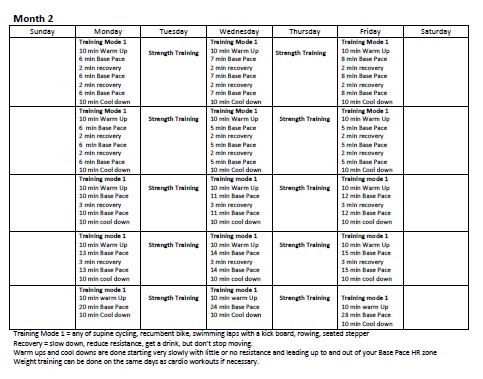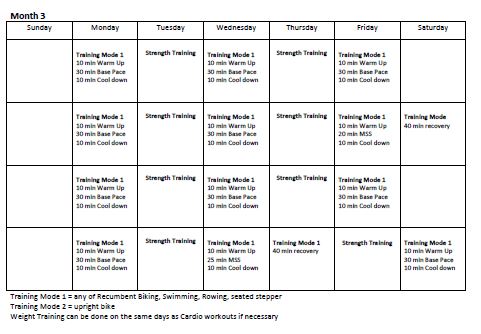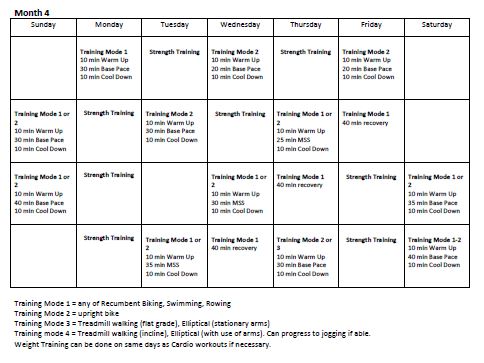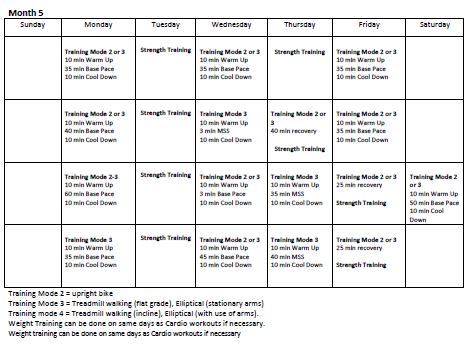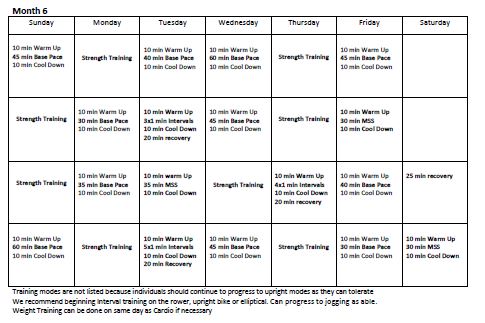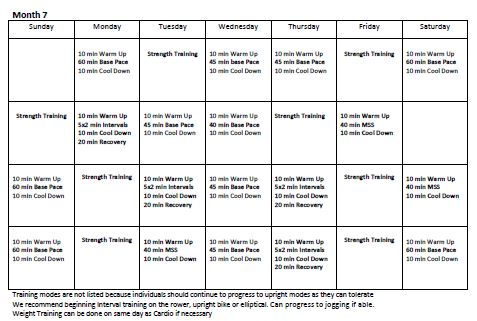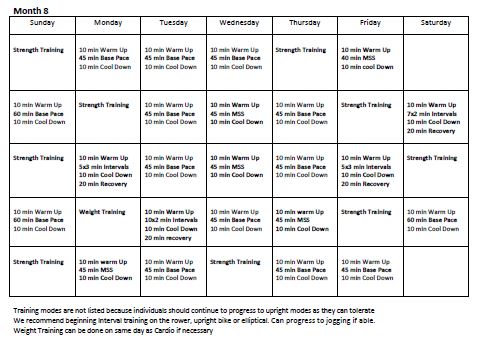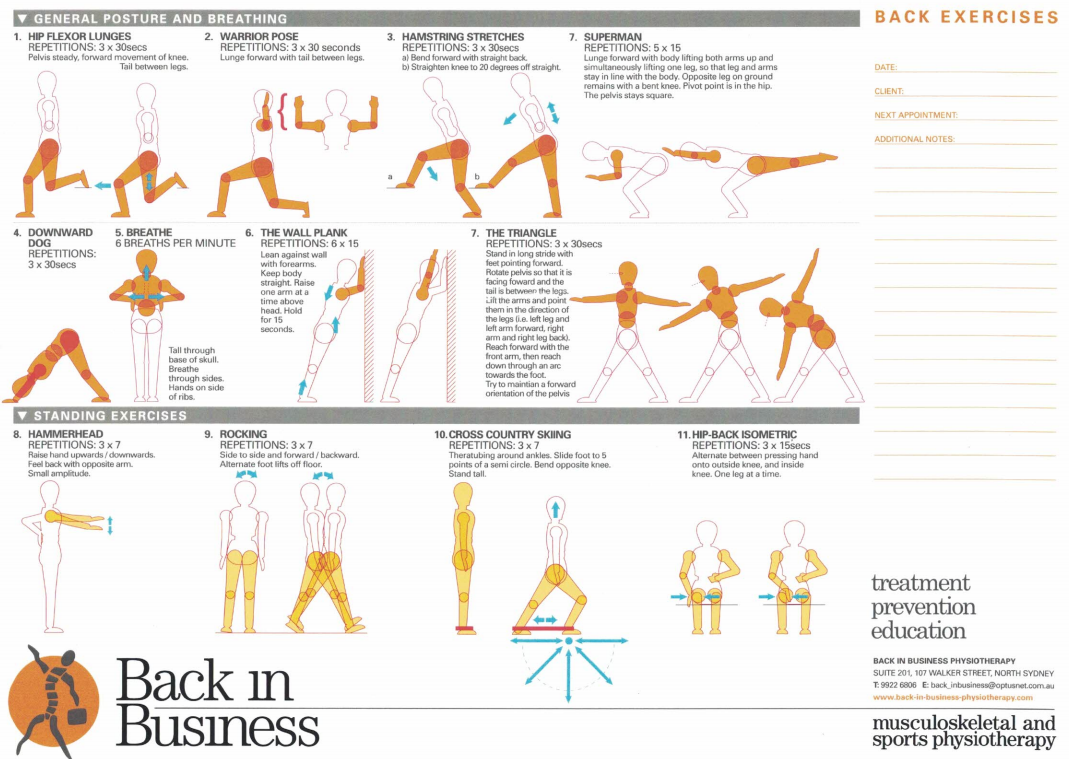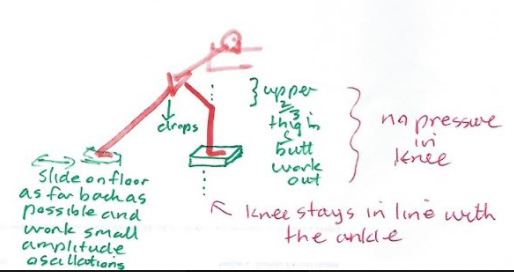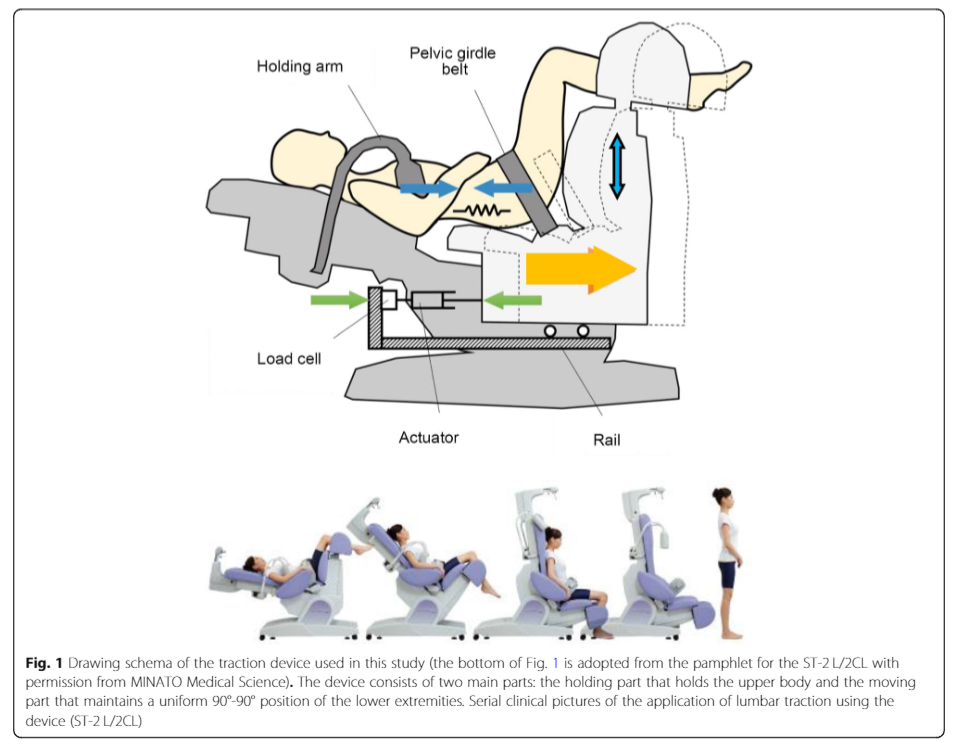Postural Orthostatic Tachycardia Syndrome (POTS)
POTS is a condition of exercise intolerance in positions other than the horizontal. Clients will often present, complaining of symptoms of dizziness in standing, whilst feeling comfortable in sitting and lying down. In the older person it can be a result of cardiovascular deconditioning where the Heart Rate and Stroke Volume do not produce enough cardiac output (CO=SVxHR). In the younger individual, it may present as part of a condition from a different aetiology. In people who have suffered a Whiplash Associated Disorder (WAD) - anterior sympathetic cervical ganglia, or in a person with concussion, POTS symptoms may arise. Additionally in people who have Ehler Danlos Syndrom (EDS) or Joint Hypermobility Syndrome (JHS) POTS like symptoms due to autonomic dysregulation may present with POTS at any stage of life. Any thoracic ring issues which affect the peripheral sympathetic ganglia may also result in POTS like symptoms. Essentially, a person may have low blood pressure and elevated heart rate (Tachycardia) as a compensatory mechanism. POTS is frequently misdiagnosed and requires a tilt table and blood pressure monitoring to aid in the differential diagnosis.
The heart plays a pivotal role or orthostasis, where left vetricular untwisting mechanics is critical for tolerating central hypovolaemia (as a result of reduced cardiac filling during orthostatic stress) in both high and low physical fitness people (Shibata S et al 2021, Ex Sp Sc Rev, 49, 2, 88-98).
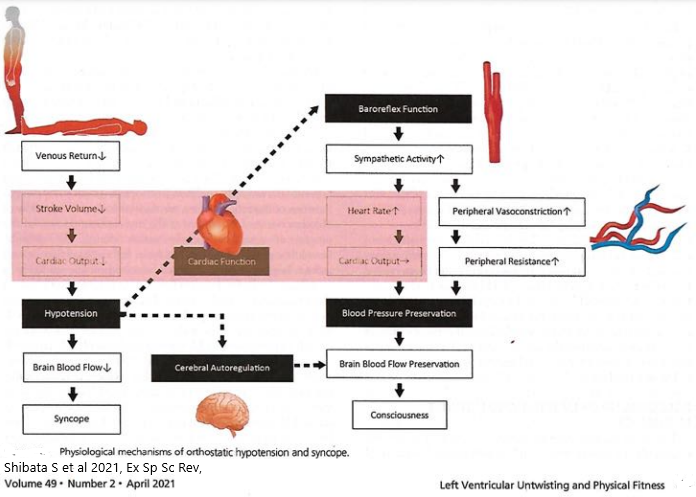

Causes of POTS interesting to physiotherapy include
- cardiovascular autonomic dysregulation, where tachycardia occurs due to decreased stroke volume from low blood volume (hypovolemia). Exercise conditioning results in increased stroke volume. However, all factors of exercise prescription need to be addressed including hydration and diet.
- sympathetic peripheral neuropathy where the calf blood vessels don't vasoconstrict sufficiently. Additionally, the calf muscles don't produce enough venous return to effectively act as the second 'pump' of the body. Exercise conditioning in supine (Pilates and Yoga) may be particularly useful for the venous return.
- hyperadrenergic activity in standing (increased noradrenergic activity).Yoga (stability) and Alexander style activity with a meditation component. Feldenkreis may also be useful for mind-body awareness
- joint hypermobility (EDS and JHS) with specific physiotherapeutic interventions
See Fu & Levine (2019) for a detailed review
The Children's hospital in Philadelphia has simplified the Dallas POTS exercise program to that which follows.
Chronological factors in rehabilitation
Where a person begins will depend on their current condition.
- Months 1-4 you should only exercise in a horizontal position, here are examples:
o Recumbent biking
o Rowing Ergometer
o Swimming laps or kicking laps with a kickboard - Month 4 you can begin to use the upright bike if it is available
- Month 5 is when you can begin further upright training (elliptical or treadmill)
Use the calendars as a week by week guide. You may need to move training sessions around, but please complete all of the recommended training sessions within that 7 day period. You will need to do this in order to move forward to the next week. One requirement is that after Maximal Steady State’ workouts you must always complete a ‘Recovery’ workout the next day. A ‘Recovery’ workout is when you do anything active, but keep your heart rate below the zone prescribed. Examples of recovery workouts include:
- low cycling at a low level on the recumbent bike-
- Using a kickboard to leisurely kick laps in the pool
- Taking a walk outdoors
- Playing in the yard
- Anything active that gets you moving continuously for the prescribed amount of time
If for some reason you miss a period of workouts (illness, injury, etc.) then you should go back in the calendar and repeat the workouts. For example:
- If you miss more than 2 cardio workouts then repeat the full week
- If you miss a week, back up and repeat 1 week
- If you miss more than 2 weeks, you should restart from the beginning of the month that you are currently in. If this is too hard then you may need to back up further.
The program gets progressively more difficult. When you take time off, you lose some of your hard-earned conditioning so it is important to repeat workouts. You may also need to return to horizontal modes of training (i.e. recumbent bike, swimming, rowing) before moving forward in the program again.
TIPS:
- Use the equipment you have access to and can tolerate training on, but starting with one horizontal mode of training is key.
- Rowing with the rowing ergometer is preferred because it mimics open water rowing. People who row in the open water tend to have the largest,
strongest hearts out of all competitive athletes. Rowing is great to strengthen your heart muscle! If you are unsure how to use it ask someone to
show you. - Keep the workouts spread out throughout the week. This is more beneficial than bunching them up and then taking several days off from
exercising. - Try not to take more than 2 days off from exercising. This is KEY!!
- If you cannot complete all the sessions for that week, you need to repeat that entire week again before moving forward.
The Basics of the Strength Training
The strength training sessions prescribed should take you 20-30 minutes to complete. All weight training should be done using body resistance or on
seated equipment. If you are unfamiliar with strength training then you should consult with a trainer to help you use proper form and technique on
each machine. It is recommended that you keep a log of your exercise. The strengthening exercises are mainly for the lower body and core, and this
is intentional. Lower body muscles act as pumps when they contract (as you are walking about in daily life) to return blood to your heart. Increased
muscle mass in your legs means more blood returned with each step you take.
TIPS:
- Strength training can make you sore in the beginning (especially 1-2 days after the workout).
- Some people find that they can only get to the gym 3-4 days a week. It is fine to do your strength training at the end of your cardio workouts instead of on separate days, if you prefer. If this causes you to become symptomatic then you should try to perform on separate days.
- Take at least a day off between strength training workouts. You need to allow your muscles at least that day to recover and to build muscle.
- We do not recommend the use of free weights until you have been able to build your strength and are able to perform with good form.
- If you have joint hypermobility then you should consult with a physical therapist prior to beginning your exercise program. The therapist can teach you how to protect your joints when you exercise
Exercises
The Basics of the Horizontal to Upright Cardio Training
Months 1-3 = Horizontal or Seated training
When beginning this exercise program you need to use equipment where you are seated or horizontal in position because upright positions will likely make your symptoms worse. Examples include:
o Recumbent bike
o Rowing ergometer
o Swimming (or kicking with a kickboard)
o Seated stepper machine
Month 4 = Upright bike
Month 5= Upright exercise
- Elliptical (begin without arm motion and then add after a few weeks)
- Treadmill walking (no incline at first)
Month 6-8 = Upright Training
- Add in use of arm motion on the elliptical and incline on the treadmill
- Make more challenging during this time as tolerated
Jogging and stair stepping can be tried only after you have performed either elliptical with use of arms or treadmill walking on an incline and did not have an increase in symptoms. You do not ever have to jog if you do not want to.
Warm Up and Cool Down:
- Can be done on any piece of equipment and should NEVER be skipped.
- At the end of your warm up you should have your heart rate approaching the target heart rate range for your workout.
- For the cool down, simply remove all resistance from the piece of equipment you are using and slow down.
In the beginning, your heart rate will take a long time to recover, but as you train more it will lower more quickly
Try performing stretching during or after your 10 minute cool down is complete. You should hold each stretch for 30 seconds and repeat 3-4 times on each side. Only stretch to the point where you begin to feel resistance. It should feel a little uncomfortable, but it should not hurt.
Supine Exercises
Exercises lying on your back, allow the blood pressure to remain even throughout the body. It also enables you to be able to build strength without cardiovascular compromise. The standing exercise for calf muscles should be done, when tolerated to aid the calf blood flow pumping mechanism.
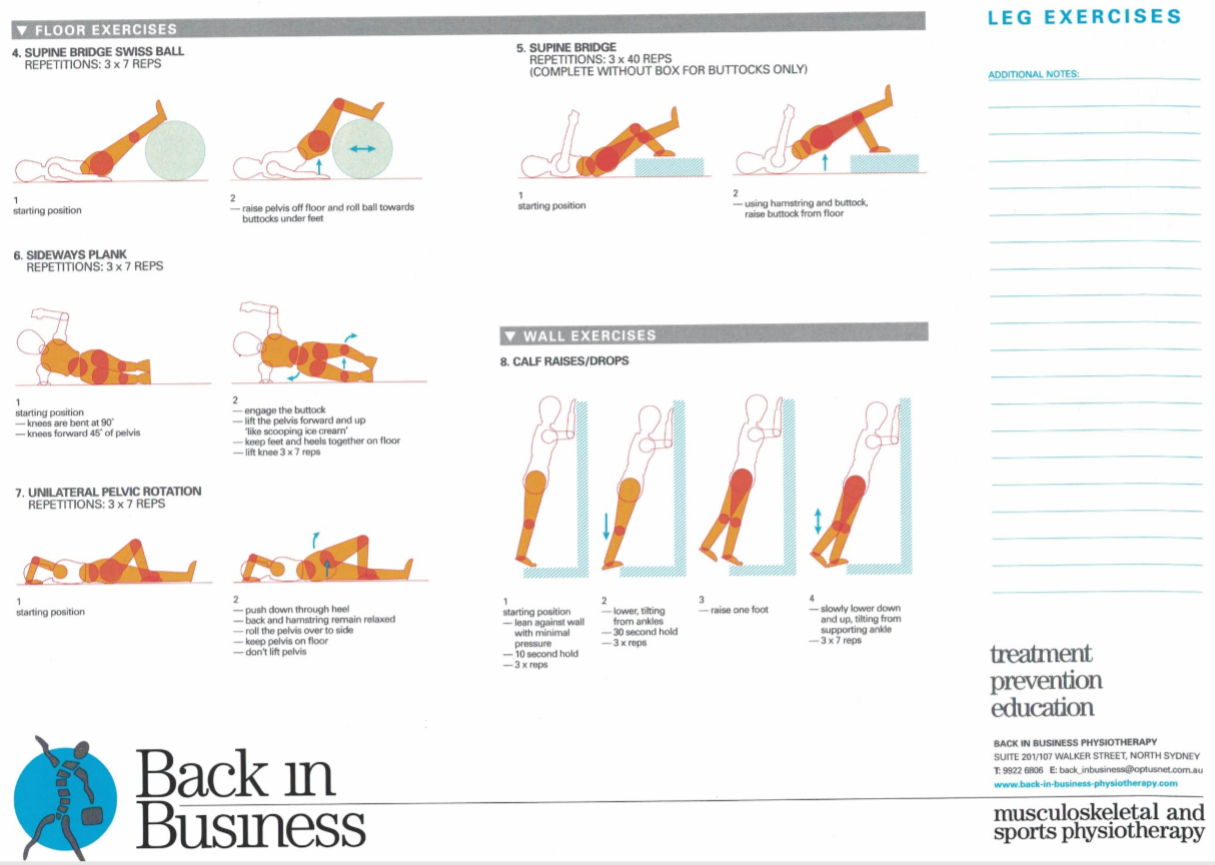
Mixed Postural Exercises
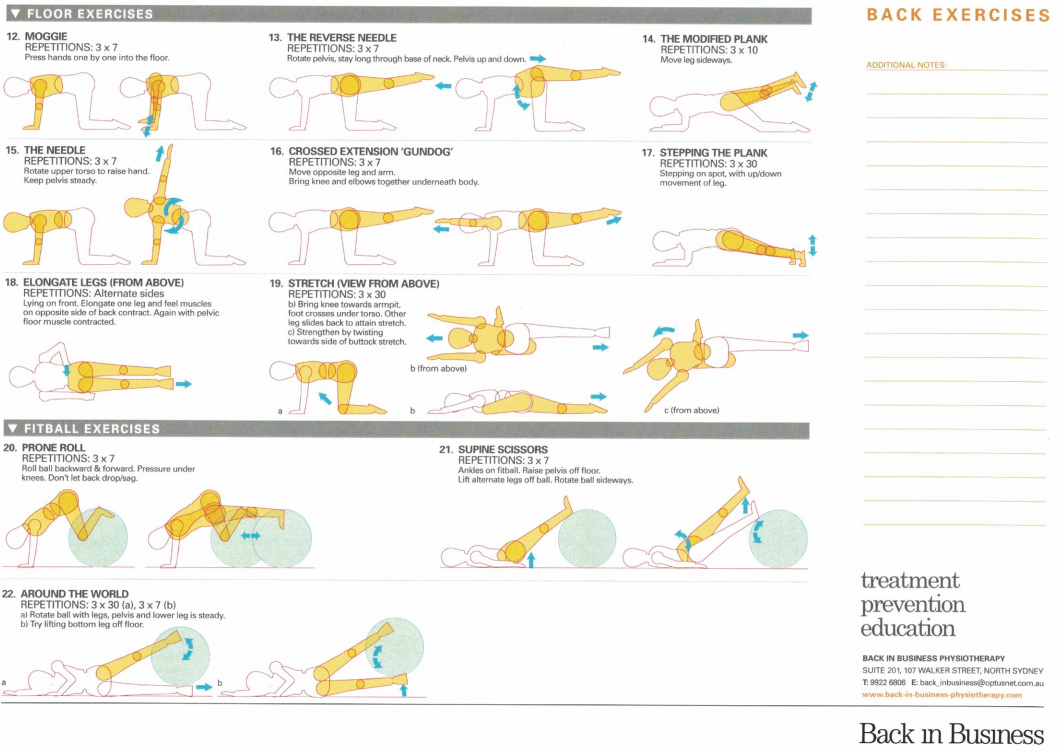
Upright Exercises
Leaning forward, pivoting through the hip in exercise 2 and 3, will lead to better hamstring, gluteal and quadriceps engagement. The Sideways Lunge should only be down once the Reverse Lunge is perfected. The use of a slider on the floor and progressing from reverse lunge, to diagonally sideways lunge and eventually sideways lunge may need to proceed lunges with steps and certainly before forward lunges. Aim, is to re-orient the motor learning systems to efficiency of movement both metabolically and mechanically.
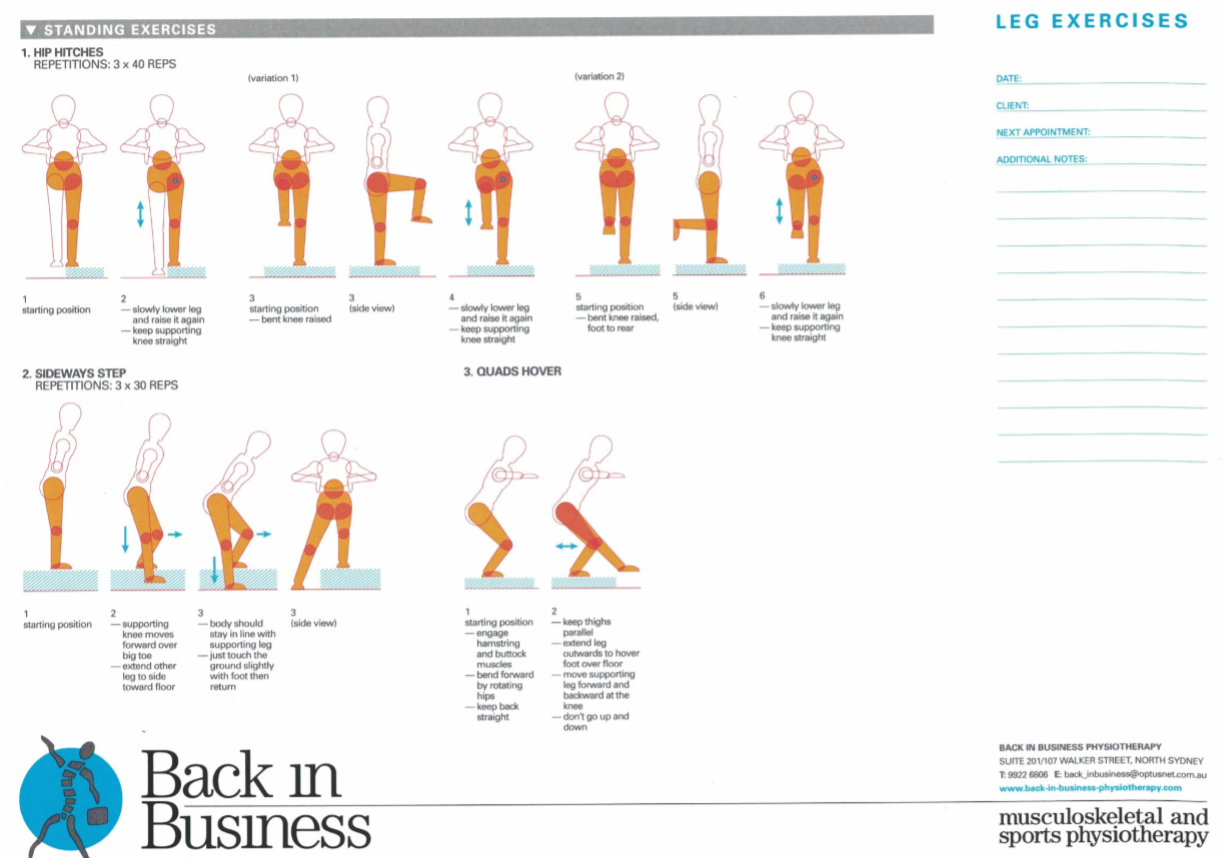
Monitoring your Heart Rate
We recommend you purchase a heart rate monitor set (a watch with a chest strap) to monitor your heart rate during cardio exercise training so
you can exercise in the proper heart rate zones. These can be found online or at a large sporting goods store. You do not need to purchase an
expensive model. Each cardio workout is prescribed to be within a specific heart rate range (see Training Guidelines sheet from your healthcare
provider), and it is important that you complete the workout in that heart rate range. You may notice that your resting heart rate decreases with
training. Or, it could be unchanged, but your heart rate response to upright posture is lower.
TIPS:
• Some monitors work even while swimming in the pool.
• If you ever question what the monitor is reading (equipment can go bad or need new batteries), simply feel your pulse at your neck or wrist and
count the beats for 15 seconds and multiply by 4 (heart beats per minute).
If you are unsure how to take your heart rate this guide can help you:
§ http://www.move.va.gov/download/NewHandouts/PhysicalActivity/P09_HowToTakeYourHeartRate.pdf
Long Term Maintenance Cardio Training
Months 6-8 of training is different for each person. Some people choose to maintain the level of training laid out in Month 5 forever, but we recommend trying to push forward. After you have completed the program you should continue to exercise to maintain what you have worked for. During this time you can use whatever modes you enjoy most. High intensity interval training, is a fancy name for the training that begins in calendar Month 6. It has been shown to provide great benefits to the heart and lung’s response to exercise for healthy individuals and several patient populations. We have found it to be beneficial to patients with POTS when it is introduced at a time when they are ready for it and responding well to their training. Here is an example of this training
- Step 1: 10 minute- warm up to get your HR up to Base Pace zone
- Step 2: 1 minute- go “all out”, hard and fast, increasing the resistance and speed on the mode you are using, and trying to get your HR up
to your race pace zone
- Step 3: 1 minute- remove all resistance, slow down, and actively recover.
Take this time to get a drink, but keep moving on the piece of equipment. It doesn’t matter what your HR gets down to.
- Step 4: Repeat steps 2 and 3 for two to three more trials
- Step 5: 10 minute cool down
- Step 6: 20 minute Recovery workout.
TIPS:
• Begin with the upright bike, rower, or elliptical as these are safer than the treadmill for interval training. Try to treadmill only when you are ready.
• You can add any strength training you want, and try other things like yoga, aerobics classes, returning to competitive sports as you feel able (we do not recommend any exercise in the heat).
• Consider yourself on a path to wellness and do what you feel you can do! We often hear that symptoms continue to decrease with long term training.
• Remember each patient progresses through the program to upright exercise at a different pace and that is okay!
What to Expect Getting Started
This program is not an easy fix to having POTS, and if exercise made everyone feel better in a matter of weeks, everyone would be doing it. The real results will be seen after several committed months of training. The first month may be very difficult, and you may feel increased fatigue during this month. This is not surprising, so do not give up! You are challenging your system to do things it CAN do, but is not USED TO doing. The second month may still be tough. The hope is that you’ll feel less fatigue, begin to sleep better, and suffer from fewer POTS symptoms in your daily life than you did before beginning the training. This is the goal!!!
TIPS:
• Your commitment and mental toughness are key.
• When you begin with a new mode of training, it is not uncommon to feel increased fatigue. Listen to your body. Push forward when you can, or repeat a week if you feel you need to.
• If you are anything like the individuals we’ve met with POTS, you probably do not feel good most of the time, and have tried several other things to make your condition better, Here is the question we are proposing to you: Why not give this program your utmost effort for 3-5 full months before deciding if it helps you or not? Remember the benefits of training occur after months of training and not just days or weeks.
• Write down a list of things you want to resume in your life, tape it to your bathroom mirror, and read it every day. Read it especially on the days you do not feel like going to the gym - allow it to help motivate you to get your quality of life back.
• Get a workout buddy if you need one! They can’t follow your heartrate zones, but they can work out with you!
• Ensure your family is on board with supporting you in this journey. Help them understand you may feel more tired in the beginning, but the hope will be to feel better in the long run.
• Family support is important, but YOU need to be the one to take the responsibility to make this change happen.
Exercise as Your Lifelong Therapy
If you feel that exercise is helpful for you in any way, maintaining exercise will then be important for you to keep the benefits and continue to see further improvements in your health and quality of life. Furthermore, you will experience the benefits of regular exercise in many other areas of your life and health, as well. Many patients successfully resume caring for their children, full-time work, full-time school, or enter college when previously they thought that these things might be impossible. We sincerely hope that this is the case for you as well. Keep in mind that according to the American College of Sports Medicine (ACSM) every healthy adult should perform 30-60 minutes of exercise more days than not. Most of our
patients adopt exercise as part of their daily personal hygiene program. Some patients feel that daily exercise is needed to avoid developing symptoms again. If you have an illness, setback, or quit exercise, and realize that you felt better while training, this is actually a good sign! Do not be discouraged. You have a good response to exercise and you know that it makes you feel better! Just start again. You likely need to begin with horizontal modes of training, but you will know how to progress yourself through the program again.
Physiotherapy
Physiotherapy can consist of 'hands on' mobilisations of the spine, thoracic rings, myo-fascia as well as guidance and feedback on exercise execution and progression. Additionally, the application of lumbar mechanical traction can lead to mobilisation of the thorax and it's peripheral sympathetic ganglia. Moreover, the post traction exercise protocol, reinforces the mode of action of the postural stabilisers and spinal mobilisers before a person gets up from the treatment table.
Post Traction Exercises are essentially those described above, whereby abdominal and bridging exercise in supine are complemented with oscillations of the pelvis and hips. From Supine, exercises in side lying, then in 4 point kneeling, are followed by isometrics in sitting and finally oscillatory movements in standing, including the wall plank, queen mum and Alexander breathing exercises.
Supine exercises can also include Pilates style hip and core stability, as well as simple cycling. These have some cardiovascular conditioning effect as well as promote blood flow from the calf.
Uploaded : 15 November 2021
Updated : 2 February 2022




